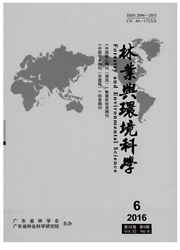

 中文摘要:
中文摘要:
2008年初,广东深圳福田红树植物遭受了近五十年来最为严重的低温寒害,引种红树及本地红树物种都受到了不同程度的影响,主要表现在叶片枯萎、树干折断,植物种群相对多度及密度改变。文章在2008年度冻害调查的基础上,2009、2010年对该片红树植物开展了恢复状况和生长现状调查,结果表明:(1)引种树种恢复的状况在不同物种之间有所差异,引种海桑、无瓣海桑在冻害后一度得到良好恢复;木榄生长良好,也有新枝萌发,受冻害影响较小;海莲大多数死亡,从原有的47株减少到目前的12株;澳洲白骨壤生长良好;(2)乡土树种恢复良好,秋茄、桐花树和白骨壤都可正常生长;(3)由于海桑、无瓣海桑受害严重,管理人员对其大树和幼苗进行了人工清理,目前保护区内海桑、无瓣海桑数目急剧减少。
 英文摘要:
英文摘要:
In early 2008, the mangrove plants in the Shenzhen Bay have been suffer from the most severe cold damage during 50 years. That native and introduced mangrove have been affected to some extent, were characterized by stem break, leaves withered, and change of relative abundance and density of mangrove species in community. In this paper, the cold damage and renew of mangrove plants were investigated in 2009 and 2010. The results showed : ( 1 ) Different introduced mangrove plants have different renew and recovery capability, for examples, the introduced Sonneratia caseolaris and S. apetala were recovery well, which all individuals almost have new leaves; Bruguiera gymnorrhiza recovery well and grow to be formed new young twig; the most of Bruguiera sexangula died and decreased from 47 to 12 individuals ; the introduced Avicennia marina var. australasica from Australia recovered well; (2) The native species such as Kandelia candel, Aegiceras corniculatum and Aricennia marina, grow normally during the cold damage, which indicated the native species is adapted; (3) Since S. caseolaris and S. apetala were suffer injury, the most of their mature individuals and seedlings were cut and clean away by the man- ager of National Natural Reserve.
 同期刊论文项目
同期刊论文项目
 同项目期刊论文
同项目期刊论文
 期刊信息
期刊信息
